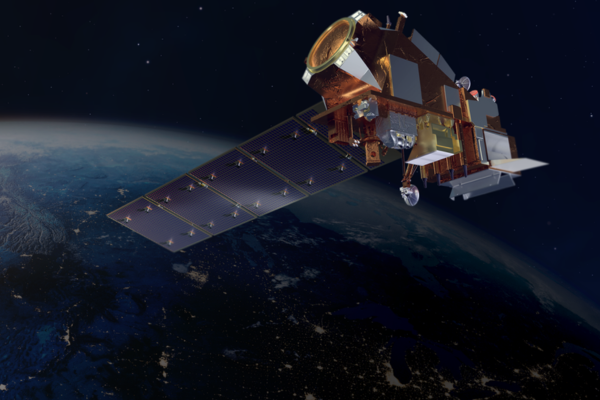We use satellite buses for Arctic climate monitoring because changes in temperature and weather conditions in this area say a lot about our planet’s future. Without the Arctic as our planet’s refrigerator, the Earth could not cool. Thus, changes in Arctic weather monitoring say a lot about climate change in the entire world. Moreover, northern sea ice is very important for keeping Earth’s energy balanced. Polar areas should remain cool because snow there reflects sunlight. Last, sea ice cools the air, and forms a barrier between cold air and warm water below. But now, let’s see how climate is changing and how satellite buses help us monitor arctic climate changes and fight these.
How is the climate changing in the Arctic?
The Arctic climate change phenomenon started back in the ’80s. According to satellite monitoring data, there are different changing patterns for spring, summer, and winter, especially when it comes to surface temperature and cloud fraction. It seems that this region became warmer starting in 1982. Simultaneously, there are more clouds over it during spring and summer. Luckily, this area is not cloudy and quite cooler in winter. New monitoring data says this area heats up four times more rapidly than our entire planet. This is disastrous for people, flora, and fauna. According to climate monitoring data, we gathered when we first started using satellite buses for observation, this region was heating up only two times more rapidly than our entire globe. However, monitoring news arriving later proved that this data was incorrect. For the past 43 years, the Arctic has been warming up 3.8 times more rapidly than our entire planet.
How cold is the Arctic right now?
One of the Arctic climate change facts is that in 2023, the most extreme low temperature here was -80.3 °F (-62.4 °C). This was the annual coldest temperature, and a record for Tongulakh station in Siberia registered on January 14. But it’s easier to determine how cold weather is in the Arctic during the winter season by monitoring how much the Arctic Sea ice extended. For example, in December 2022, it was below average, reaching fourth and then the lowest for the month ever recorded via satellite. In February 2023, the Antarctic ice extent set a new record low of 1.91 million square kilometres or 737,000 square miles. This says a lot about how arctic climate temperature change is worse than we estimated at first. Ice is melting mid-winter and the weather in this region is not at all cold when compared with how it used to be. Luckily, by using Arctic climate monitoring space technologies and implementing some environmental measures, we can change this situation.
Is there a satellite bus for monitoring the Arctic climate?
Arctic climate variability will be observed and recorded by an Arctic Weather Satellite (AWS) bus model. AWS is made up of a meteorological satellites constellation that ESA (European Space Agency) should launch in 2024. It’s very good news to know that ESA already has a program for Arctic climate monitoring. It will build on MetOp and the MetOp SG old weather satellite models to obtain short-term Arctic weather forecasts. Built on OGB InnoSat climate monitoring platform, AWS bus will be a platform that consists of redundant and selectively improved microsatellites. ESA plans a launch mass of about 120 kg for the three-axis stabilized AWS bus. This climate monitoring will need 120 W of power to work, and its mission lifetime is around years. Scientists and space engineers will invest a lot of hard work into this climate monitoring project. With some luck, we will get advanced climate monitoring technology to help us ensure the Arctic region remains cold and our planet is safe.
Which satellite is used for monitoring the weather?
We plan to use advanced satellite bus capabilities for the Arctic climate impact assessment. So far, we have the NOAA AVHRR satellite for monitoring weather and making smalls scale observations on our planet. AWS should play a major role in how we change our planet’s future and make it a safer place. Having a separate Arctic climate monitoring satellite is a must. Temperatures in the Arctic region get warmer, while sea ice melts in December and February. If we want to survive in comfortable planetary conditions, we should do something about climate-changing conditions in the Arctic. AWS bus climate monitoring will inform us in detail about what’s going on there. Thus, we will take precautionary measures at the ground level.
Wrapping it all up, advanced Arctic climate monitoring satellite bus can help us ensure the Arctic region will remain cold. Temperatures at the poles must remain negative during winter because this helps us survive in optimal conditions on the entire planet. ESA will launch the AWS satellite bus for Arctic climate monitoring soon, so we will know more about what we can do further to keep this region cold.
